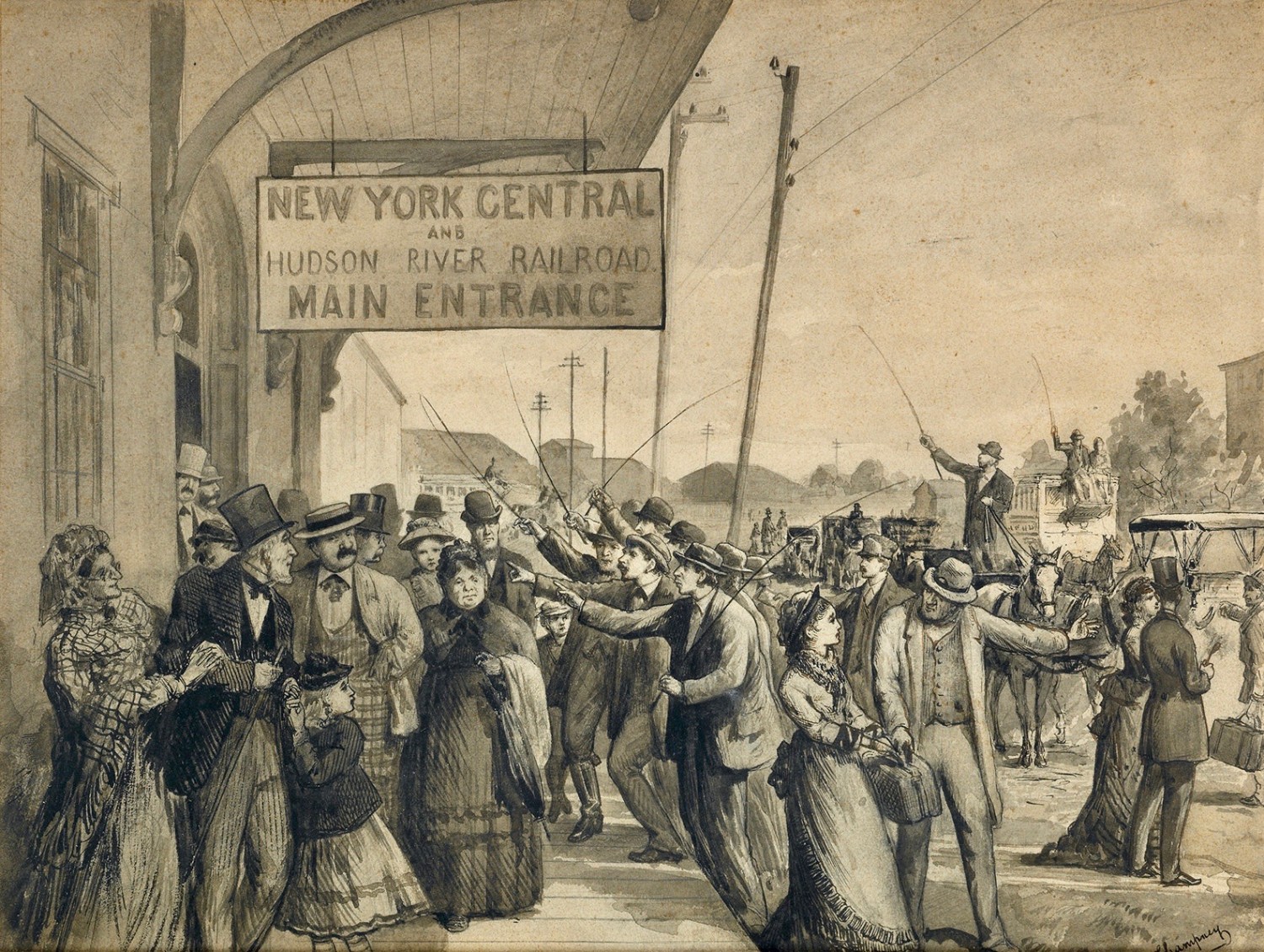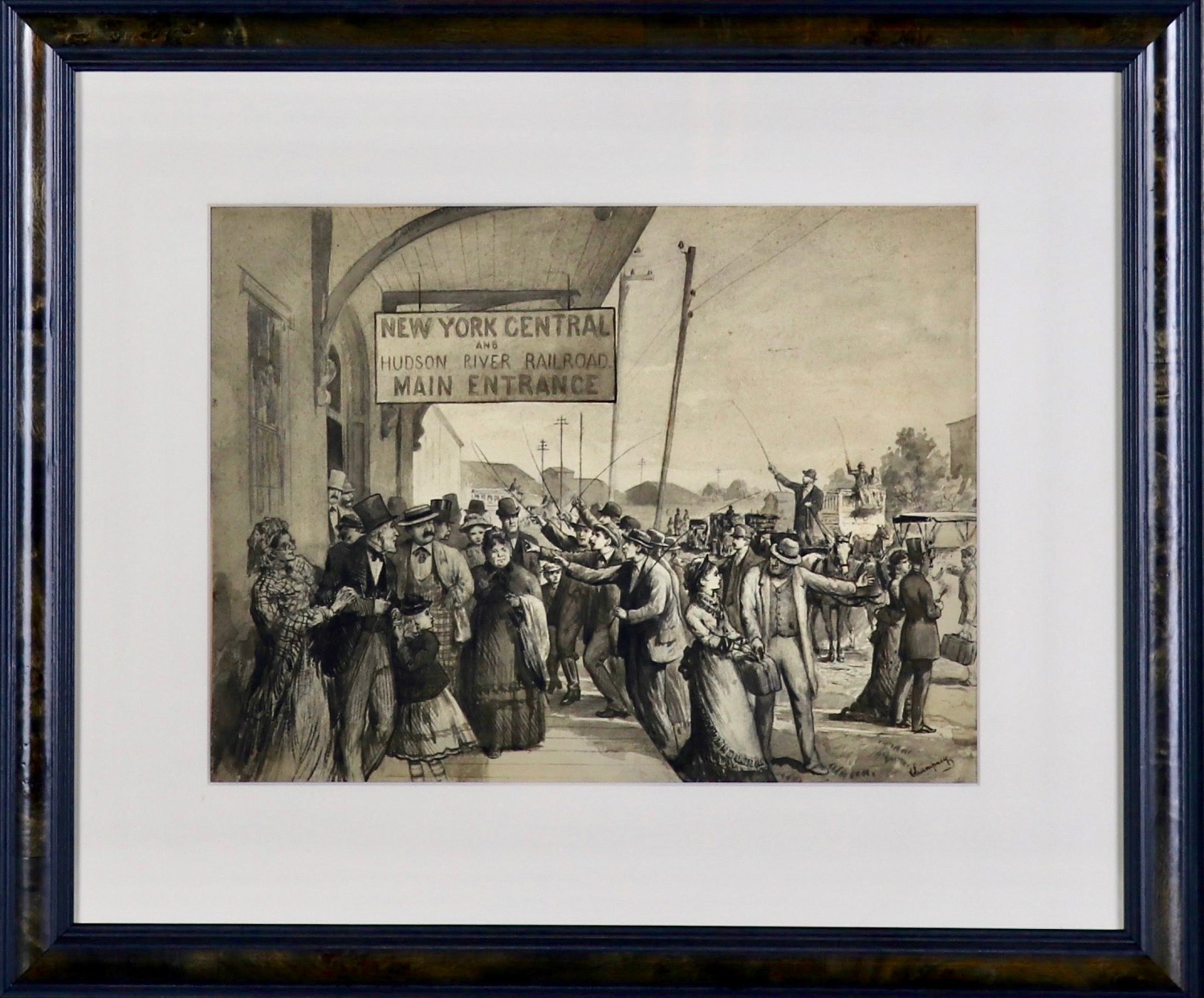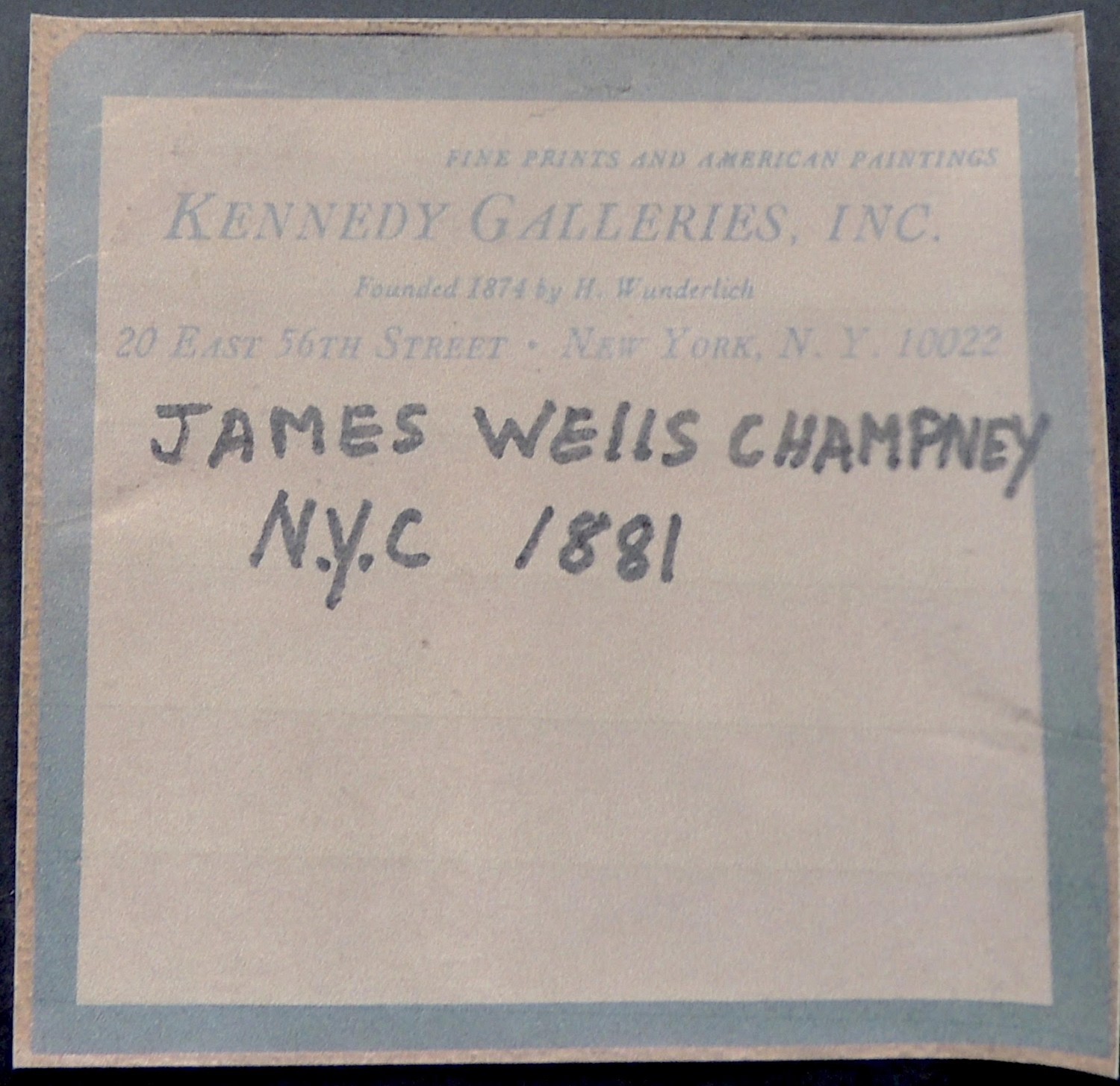"New York Central and Hudson River Railroad" Lot no. 4072
By James Wells Champney (American, 1843-1903)
circa 1881
9.75" x 13.00"
Ink, Graphite, and Watercolor on Paper Mounted to
Signed Lower Right
REQUEST PRICE
PURCHASE REQUEST
Exhibited: Kennedy Galleries, with their label suggesting the creation date of 1881.
Explore related art collections: Railroad/Trains / 1800s / Urban/Cities / $5,000 - $20,000
See all original artwork by James Wells Champney
ABOUT THE ARTIST
James Wells Champney, a distant cousin of landscapist Benjamin Champney, was born in 1843 in Boston, Massachusetts. A well-known artist-teacher, he is best known as a specialist in rustic genre scenes, using a broad, painterly, and rather informal approach to his works. He also painted many portraits and landscapes, and stylistically was "one of the first Americans to grasp and utilize the spirit of impressionism." (397)
As a young man he took drawing classes at Lowell Institute and studied anatomy under Oliver Wendell Holmes. At sixteen years of age, he was an apprentice to a wood engraver*, but terminated the relationship to serve in the Civil War in 1862. He contracted malaria and was discharged from the military, and soon taught drawing classes at Dr. Dio Lewis's Young Ladies Seminary for two years beginning in 1864.
Deciding to become a professional artist, Champney left for Europe in October of 1866. His first stop was London, and a month later his travels took him to Ecouen, France where he was a student of Edouard Frere. Two years later, he studied in Antwerp under Joseph Van Lerius, and the year following traveled to Italy where he exhibited his first genre* painting at the Paris Salon*.
He returned to Boston in 1870 to open his own studio. He continued to paint his popular genre paintings. Several years later, Champney illustrated a series of articles by Edward King. Commissioned as an illustrator by Scribner's magazine, he created more than 500 illustrations, the result of thousands of miles of travel. Soon thereafter, he again departed for Europe to complete figure drawings of American life for a French magazine.
He returned to America in 1876, settling in Deerfield, Massachusetts, where he domesticated Edouard Frere's vision of rural French peasant life and translated it to the hills and farms of the Deerfield area. An example would be Landscape of the Deerfield Valley (oil on canvas, 1877). A year later, he turned to pastel* portraiture and illustration, under the name 'Champ', while teaching art at Smith College between 1877 and 1884.
Between 1878 and 1885, he also went once a week to teach in Hartford at the Society of Decorative Art, which later changed its name to the Art School of the Art Society of Hartford. Champney continued to live in Deerfield with his wife, Elizabeth 'Lizzie' Champney, who was herself a well-known writer of travel and adventure stories, often illustrated by her husband.
His copies of European masterpieces and of New York society personalities bolstered his popularity and notoriety. The pinnacle of Champney's career was in 1897 when 40 of his pastels were included in an exhibition at the Knoedler Gallery.
An elevator accident took Champney's life in 1903, in New York City, as he departed the Camera Club.
Michael David Zellman, 300 Years of American Art, via Ask Art





